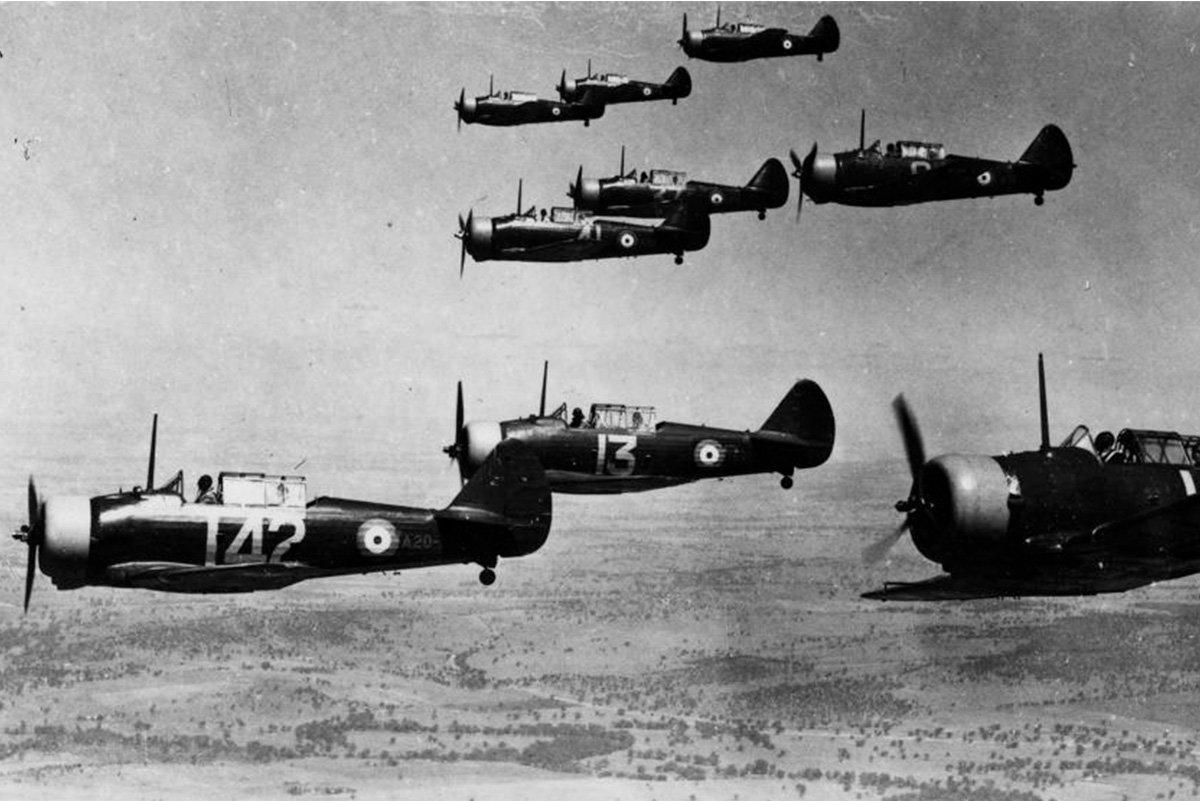
Wirraway aircraft flying in formation during WWII circa 1944. Photo courtesy Wikimedia Commons.
Since I brought him up already, and his name is synonymous with the phrase, we’ll talk about Dave Grohl real quick before I get to the aerial phenomena known as “Foo Fighters.” After Kurt Cobain’s death in April of 1994, then Nirvana drummer Dave Grohl started working on a solo musical endeavor, mostly in the interest of catharsis following the loss of his close friend.
The project consisted of Dave recording some of the songs he’d written over the years that had never made it into the recording studio, all on his own. This means each instrument (aside from one guitar guest spot) and all the vocals were done solo by Grohl in less than a week (which will never not impress me). In an attempt to have some anonymity, the idea became to release the album as if it were a full band, rather than a Nirvana offshoot or solo project, and he needed a fitting name (we’re getting to the point, I promise).

During that time, Grohl had a notable interest in UFOs, and had been reading a lot of books on the subject. The name he ended up giving to his debut album, and his temporary one-man band was–of course–“Foo Fighters.” Named after a string of unexplained aerial sightings by both Allied and enemy forces during WWII, the mainstream use of the term is now more associated with the band than its original meaning. This is particularly funny, since Grohl jokingly said in a 2014 interview with “60 Minutes”:
“Had I imagined that it would last more than a month-and-a-half, I might have named it something else…it’s the dumbest band name ever.”
Quality of band name aside, the origin of these Foo Fighters has been debated since they were first spotted towards the tail-end of WWII, and remains a mystery to this day.
It was one night in November of 1944 when three airmen from the 415th Night Fighter Squadron first saw them. A Beaufighter crew consisting of pilot Lt. Ed Schlueter, radar observer Lt. Donald J. Meiers, and intelligence officer Lt. Fred Ringwald were flying in the Rhine Valley, near the France-Germany border, when they noticed “eight to 10 bright orange lights off the left wing…flying through the air at high speed.”
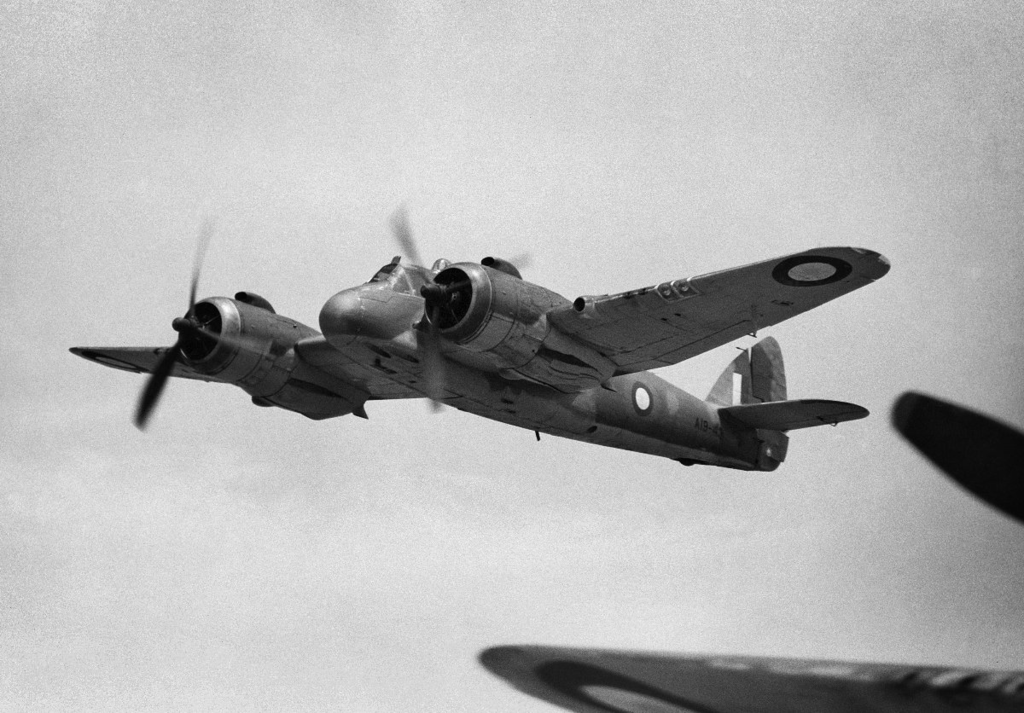
Their initial reaction was to check on-board radar as well as with Allied ground control, but both came back with zero indication of anything being in the skies aside from them. Despite the confirmation, there was still the thought that these could be some sort of aerial weapon created by the Germans, and just as Schlueter began repositioning the plane for defense preparation, the lights disappeared.
Within a month, another handful of sightings occurred. On December 17th, a pilot flying over Breisach, Germany saw “5 or 6 flashing red and green lights in ’T’ shape” that seemed to follow him, even when he ascended another 200 feet, before vanishing. December 22nd had two sightings. One flight crew flying over France described two bright orange balls of light that, according to them, seemed to rise from the ground to an altitude of around 10,000 feet, where they stayed with the pilot for a few minutes before making several seemingly controlled movements and ultimately disappearing.
Lt. Samuel Krasney had a slightly more unique experience, seeing an object traveling alongside his jet within feet of the wings. Krasney reported the object to be cigar-shaped, glowing red, and able to keep up with his evasive movements intended to shake it. It flew along with him, matching his speed for several minutes, and then was gone.
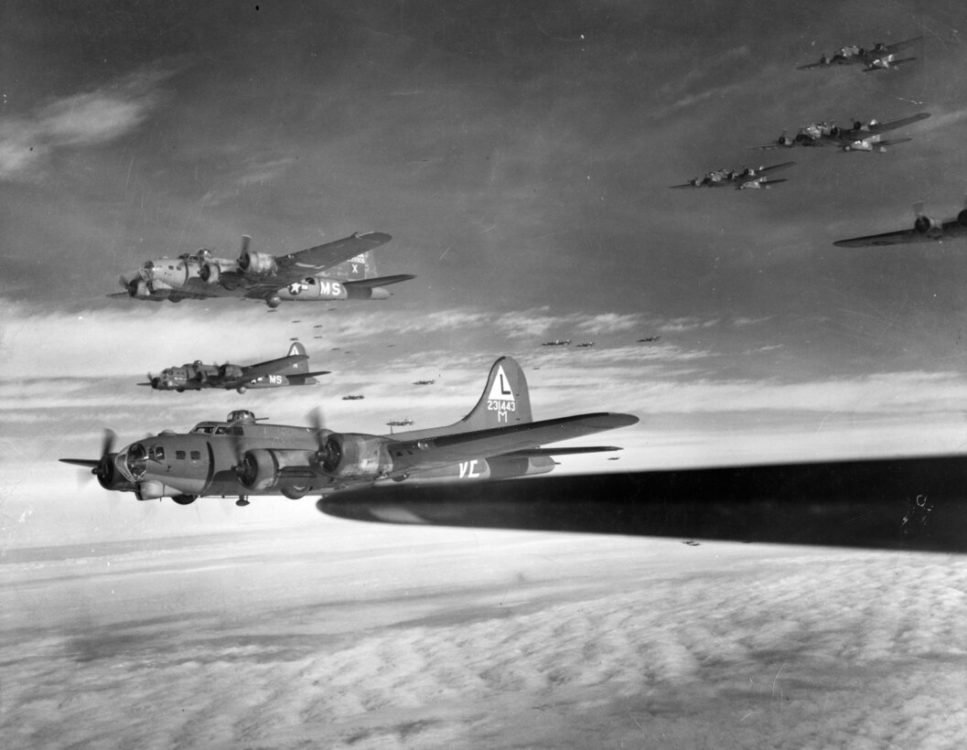
The 415th Night Fighter Squadron is widely credited with the naming of these phenomena. At the time, the word “foo” was regarded as a nonsense word used by American cartoonist Bill Holman in “Smokey Stover”–a cartoon strip centered on the misadventures of a firefighter. Not only was Smokey Stover actually painted on several military aircraft during WWII, but Lt. Meiers, the radar observer from the 415th, was a fan of the cartoon. Meiers is said to be the first person to coin the term, and it was quickly adopted by fellow airmen.
It really didn’t take long for word, and speculation, about these sightings to spread.
Robert Wilson, a war correspondent with the Associated Press, wrote an article titled “Balls of Fire Stalk U.S. Fighters In Night Assaults Over Germany,” which ran on the front page of The New York Times, January 2nd, 1945. The article simultaneously posits the idea that this was something the German military was responsible for, while also sharing the first-hand accounts of U.S. airmen who have a lot more uncertainty that this was even a man-made object. Lt. Meiers is quoted in the article, saying:
“When I first saw the things off my wing tips, I had the horrible thought that a German on the ground was ready to press a button and explode them. But they don’t explode or attack us. They just seem to follow us like will-o’-the wisps.”
A lot of time and effort has gone into debunking these Foo Fighters. The idea that these were being used against any particular side or country was dispelled when investigations showed that both Japanese and German pilots had also reported similar sightings of their own. While the name Foo Fighter became a catch-all for any UFO sighting for a time, it originally served to describe these specific sightings that looked to many like glowing, orb-like entities or fireballs.
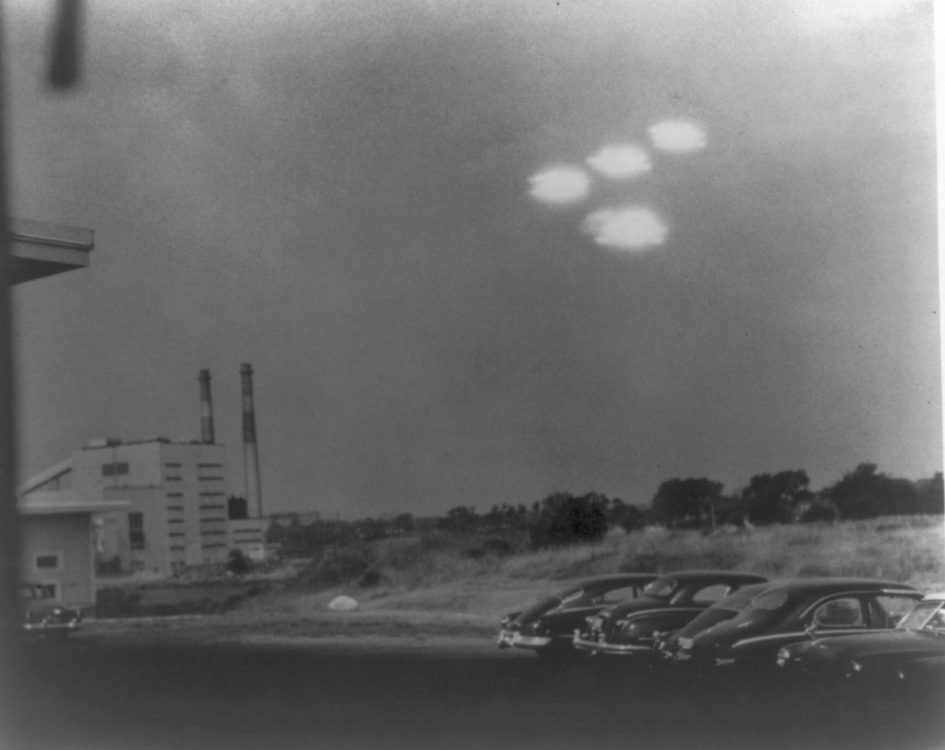
This description lent itself to the idea that these sightings could be a weather phenomenon known as St. Elmo’s fire (unrelated to the Emilio Estevez melodrama from the 80’s). St. Elmo’s fire, largely seen as a good omen by sailors, is plasma that produces a spark. It is independent of the clouds or the ground, which differentiates it from lightning. It’s not uncommon for this spark to occur on or near ships’ masts, as well as aircraft wings, and produce a violet or blue glow.While it was considered plausible by some that St. Elmo’s fire could explain these sightings, pilots who had first-hand accounts of both Foo Fighters and various weird weather occurrences quickly shut down the idea, due to the stark color differences and the observed maneuverability of these objects.
Another go-to explanation was combat fatigue. While incredibly nuanced, and thankfully better understood today, we still know that the impacts of war and combat on service members can contribute to a multitude of physical and psychological issues. However, what they suggested then was collective psychosis, which is not only exceedingly rare, but even more unlikely in these scenarios where reports of sightings were happening from all sides and independent of one another.
Then, of course, there was the idea that this was in fact a weapon developed by Nazi Germany. Some placed blame on the Nazis as a collective entity, but others had a specific name in mind: Wernher von Braun. The then-32-year-old aeronautics engineer led the development of the V-2 rocket, the first-ever long-range ballistic missile. Braun was regarded as a prodigy in the field and was thought by many to be capable of never-before-seen technology. His intelligence was so sought after, in fact, that he was one of 1,600 German scientists and engineers brought to the U.S. for government employment following WWII as part of Operation: Paperclip. Von Braun would go on to lead the development of the Saturn V rocket that took Neil Armstrong and Buzz Aldrin to the moon.
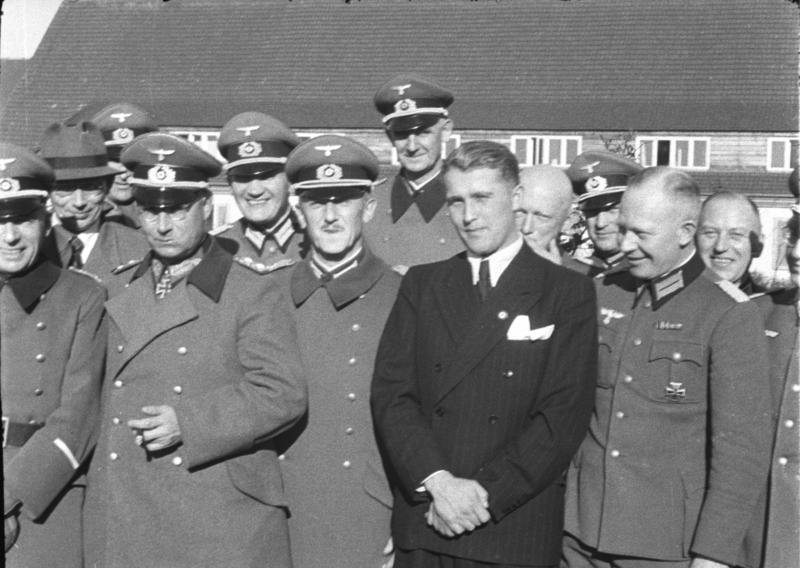
While some still like this idea to this day, aviation experts and eyewitnesses both support the idea that the Luftwaffe had nothing that could even compare to the Foo Fighters. Despite some close encounters, none of the Airmen had ever seen any mechanical parts in these objects, nor did they ever pick anything up on radar. Nothing ever convinced them unequivocally that these were man-made weapons, or that they were even out to harm them.
There have been a number of investigations into these sightings over the years. In 1953 (right around the time the U.S. and Canada actually decided to try to build a flying saucer of their own) the CIA had even put together a group of scientists to give their insight and possible explanation. Unfortunately, this never yielded any official response. So realistically, we know just as much about these Foo Fighters now as they did back then. However, with time comes technological advancement and advantage. With sightings of these glowing light or fireball-type objects still occurring today, alongside so many other well-documented aerial phenomena, we may be well on our way to figuring out the nearly 80-year-old mystery.
Read Next: Did UFOs Really Disable
Nuclear-Armed American
Missiles in 1967?

Sandboxx News provides the latest news, entertainment, and motivation from all around the force.
BRCC and Bad Moon Print Press team up for an exclusive, limited-edition T-shirt design!
BRCC partners with Team Room Design for an exclusive T-shirt release!
Thirty Seconds Out has partnered with BRCC for an exclusive shirt design invoking the God of Winter.
Lucas O'Hara of Grizzly Forge has teamed up with BRCC for a badass, exclusive Shirt Club T-shirt design featuring his most popular knife and tiomahawk.
Coffee or Die sits down with one of the graphic designers behind Black Rifle Coffee's signature look and vibe.
Biden will award the Medal of Honor to a Vietnam War Army helicopter pilot who risked his life to save a reconnaissance team from almost certain death.
Ever wonder how much Jack Mandaville would f*ck sh*t up if he went back in time? The American Revolution didn't even see him coming.
A nearly 200-year-old West Point time capsule that at first appeared to yield little more than dust contains hidden treasure, the US Military Academy said.












